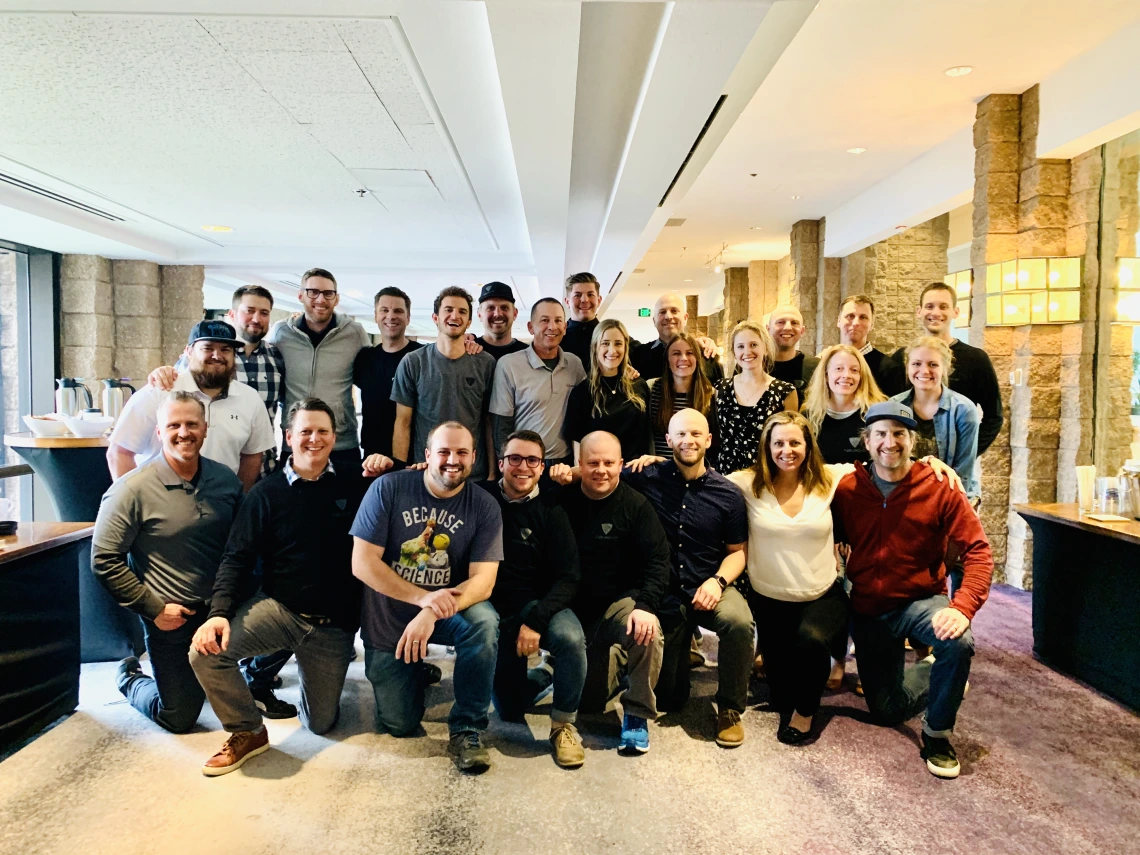Startup Helps Online Businesses Reduce Risk by Decoding Online Customer Behavior
Technology developed in the Eller College of Management processes several hundred thousand online customer interactions each day, reducing fraud and enhancing the customer experience.

The Neuro-ID team.
Courtesy of Neuro-ID
In 2015, Tech Launch Arizona first reported the founding of Neuro-ID, a startup launched to commercialize technology developed at the University of Arizona Eller College of Management. Based on the research of MIS Professor Joe Valacich and Ph.D. student at the time Jeff Jenkins, now a professor at BYU, the company sought to bring to the world a powerful new method for understanding online customer behavior. By analyzing how customers navigate and enter information when applying for a loan or buying a product – how customers touch, type, and swipe – Valacich and Jenkins discovered that anomalous data entry could suggest possible fraud or poor usability of the website or app. This new source of rich behavioral data is highly predictive and is helping online businesses scientifically measure and better understand customer intent and emotion. Such insight into the digital customer journey is rapidly transforming many online industries and this patented technology is being used by many of the world’s largest online brands and platforms.
The inventors originally worked with TLA through the processes of protecting the intellectual property for the invention and the formation of the new company. Now six years later, with a market-leading Behavior-as-a-Service (BaaS) platform and under the passionate leadership of CEO Jack Alton, Neuro-ID is facilitating a rapidly growing number of online interactions every day, helping online companies and their customers, in the words of Valacich, “work better and smarter together.”
We recently had the opportunity to speak with Valacich, Jenkins, and Alton, as well as TLA Assistant Vice President Doug Hockstad, about the roots, launch, and growing impact of Neuro-ID.
Video transcript:
Valacich: Back in 2011, I joined the UA as an MIS professor and met a super-smart and super-hard-working Ph.D. student named Jeff Jenkins. We had many shared interests and liked working together. We are both interested internet-related context around security and online shopping and we both wanted to make a difference with our research. In one of our early projects, we used mouse cursor movements to identify frustrated online shoppers. We had an “a-ha” moment when we envisioned using mouse cursor tracking and other methods of human-computer interaction such as typing on a keyboard or touching your smartphone as a method for not only assessing frustration but also assessing a person's credibility – and to do this at internet scale. We believed we had a novel idea and reached out to TLA for assistance on disclosing and protecting the IP. We knew we had invented something special but weren’t having any commercial success with this really cool and powerful technology – that is until we met Jack Alton.
Alton: About three and a half years ago, I had the unique opportunity to meet Dr. Joe Valacich and his partner Dr. Jeff Jenkins, and what I found were two super-passionate people who were interested in taking their research and commercializing it and really making a difference in the world. The next thing we did is we took this patented technology into some of the largest fintechs in the world, and what we found was that they were even more excited about it than we were. You see, they have not been able to literally understand why customers are completing a customer journey or why they’re leaving, why they can't see fraud or risk in digital applications and digital customers, and our technology with one java script installation can start to answer questions they had wrestled with for the past decade.
Jenkins: Our first customer back in 2014 was a payday lender. Watch this replay (displayed in the video) of a real customer’s interactions when answering a few questions about applying for a loan. They pause on no, go to yes, go back towards no, before back to yes and clicking yes. They then move down and answer another question before coming back and answering no. Our technology detects such anomalous behaviors at scale. Some of our key findings were when we were able to detect things like emotion, decision conflict and hesitation as people are filling out online applications. Neuro-ID is currently processing 100,000 applications every day and we have hundreds of billions of metrics in our database that we draw upon to make decisions.
Hockstad: Neuro-ID and our work with Joe and Jeff is really a good example of what TLA can do with our investigators. It spans everything from the very early stages of getting them engaged with the whole commercialization process, with the protection of their ideas, and investing in those ideas to move them forward and get to a point where they get traction out in the market.
Valacich: This all started as a university research project, but we’ve gone far beyond the science. We have built a company that helps people gain approved access to financial services. We’re helping organizations make better decisions by lowering risk and uncertainty. In sum, we're helping individuals and businesses work better and smarter together.

